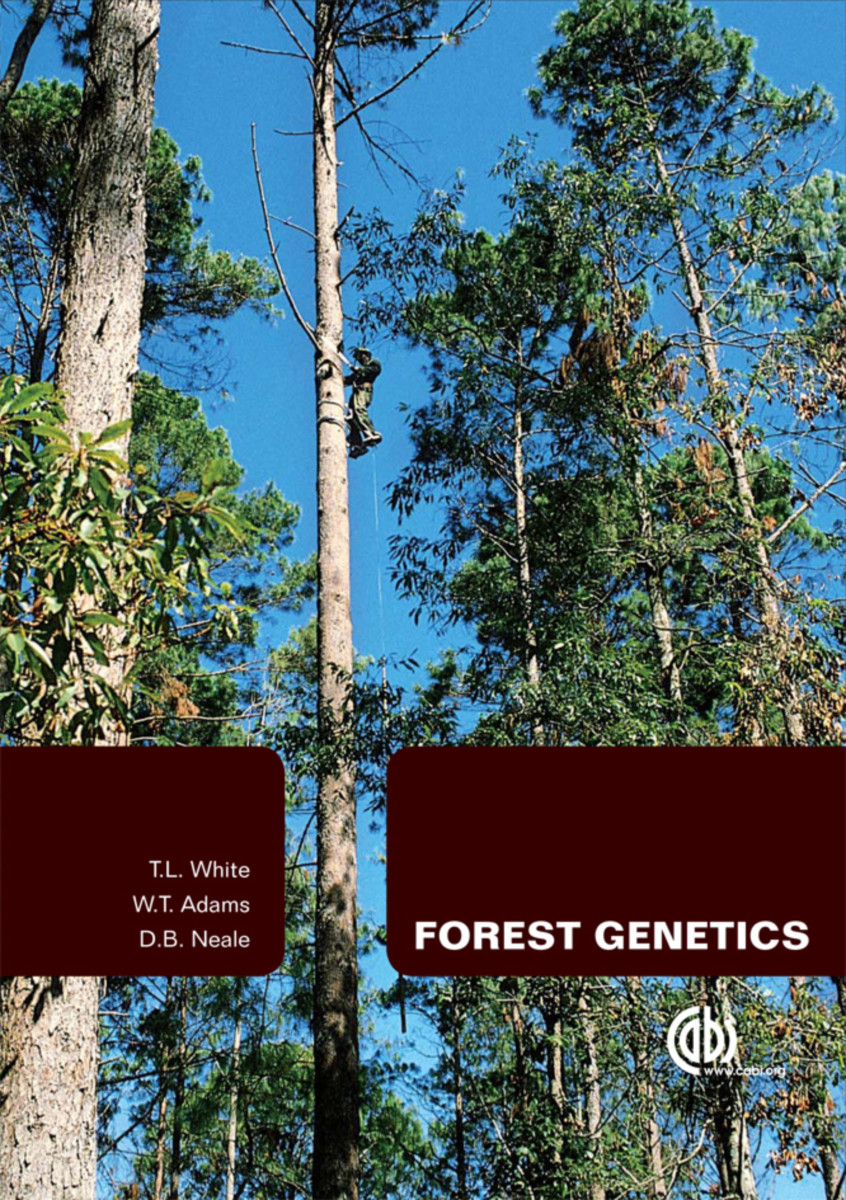Forest Genetics
- Publisher
CABI - Published
27th June 2007 - ISBN 9780851993485
- Language English
- Pages 704 pp.
- Size 6.875" x 9.75"
Winner of a 2009 Outstanding Academic Title (OAT) award
Trees continue to maintain a unique significance in the social, ecological and economic systems of the world - as large, long-lived perennials covering 30% of land on Earth; their very nature dictates their importance. An understanding of forest genetics is essential for providing insight into the evolution, conservation, management and sustainability of both natural and managed forests.
Providing a comprehensive introduction to the principles of genetics as important to forest trees, this text integrates the varied sub-disciplines of genetics and their applications in gene conservation, tree improvement and biotechnology. Topics discussed include genetic variation in natural forest trees, the application of genetics in tree improvement and breeding programs, and genomic sciences and molecular technologies.
"This is an excellent book that should receive widespread adoption and use in the coming years."
- BioScience
"This book is a must read...perfect for advanced undergraduate courses and ...as a reference manual for professional foresters working on aspect of silviculture, forest management or forest genetics. This reviewer looks forward to using excerpts for a forest genetics course and to establish this book as a class resource for years to come."
- Choice
1) Forest Genetics - Concepts, Scope, History and Importance
SECTION I: BASIC PRINCIPLES
2) Molecular Basis of Inheritance - Genome Organization, Gene Structure and Regulation
3) Transmission Genetics - Chromosomes, Recombination and Linkage Mendelian Genetics
4) Genetic Markers - Morphological, Biochemical and Molecular Markers
5) Population Genetics - Gene Frequencies, Inbreeding and Forces of Evolution
6) Quantitative Genetics - Polygenic Traits, Heritabilities and Genetic Correlations
SECTION II: GENETIC VARIATION IN NATURAL POPULATIONS
7) Within-population Variation - Genetic Diversity, Mating Systems and Stand Structure
8) Geographic Variation - Races, Clines and Ecotypes
9) Evolutionary Genetics - Divergence, Speciation and Hybridization
10) Gene Conservation - In Situ, Ex Situ and Sampling Strategies
SECTION III: TREE IMPROVEMENT
11) Tree Improvement Programs - Structure, Concepts and Importance
12) Base Populations - Species, Hybrids, Seed Sources and Breeding Zones
13) Phenotypic Mass Selection - Genetic Gain, Choice of Traits and Indirect Response
14) Genetic Testing - Mating Designs, Field Tests and Test Implementation
15) Data Analysis - Mixed Models, Variance Components and Breeding Values
16) Deployment - Open-pollinated Varieties, Full-sib Families and Clones
17) Advanced-generation Breeding Strategies - Breeding Population Size, Structure and Management
SECTION IV: BIOTECHNOLOGY
18) Genomics - Discovery and Functional Analysis of Genes
19) Marker-assisted Selection and Breeding - Indirect Selection, Direct Selection and Breeding Applications
20) Genetic Engineering - Target Traits, Transformation and Regeneration


